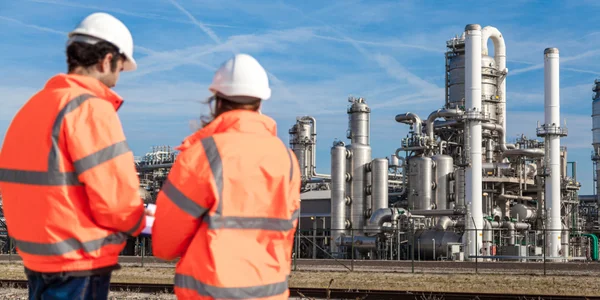مجمع الغبار متعدد الأعاصير
- المترسبات الكهروستاتيكية
- بيوت الوسائد الهوائية العكسية
- مرشحات النسيج
- مرشحات كهربائية هجينة
- إزالة الكبريت من غازات المداخن
- مبرد سحب قسري
- منظفات
- محطات تنظيف الغاز
- الأعاصير
- استنساخات متعددة
- نظام إزالة المركبات العضوية المتطايرة والروائح
- نظام شفط الغبار
- نظام استخراج الأبخرة
- أجهزة الحماية من الانفجار
- المراوح والمراوح
- معالجة مياه الصرف الصحي
- مبادل حراري من الهواء إلى الهواء
المكاتب
المقر الرئيسي

ألمانيا
-
التصفية المكثفة Himenviro Technologies GmbH
Neustraße 45 - 49, 42553, فيلبرت, ألمانيا/ألمانيا - +49 20534200990
المكتب الاقليمي

بريطانيا العظمى
-
فلتر مكثف من شركة Himenviro UK Limited
47، شارع باث WS13BX، والسال، ويست ميدلاندز، بريطانيا العظمى - +44 1922 628893
المكتب الاقليمي

الإمارات العربية المتحدة
-
فلتر مكثف Himenviro Technologies FZE – LLC
مركز الأعمال، المنطقة الحرة لمدينة الشارقة للنشر، الشارقة، الإمارات العربية المتحدة - +971-556074697
المكتب الاقليمي

الهند
-
شركة هيمنفيرو برايفيت ليميتد
د-247/11، القطاع 63، نويدا - 201301، أوتار براديش، الهند - +91-120-4642-500
المكتب الاقليمي




الهند
-
شركة هيمنفيرو برايفيت ليميتد
د-247/11، القطاع 63، نويدا - 201301، أوتار براديش، الهند - +91-120-4642-500
المكتب الاقليمي




الهند
-
شركة هيمنفيرو برايفيت ليميتد
د-247/11، القطاع 63، نويدا - 201301، أوتار براديش، الهند - +91-120-4642-500
نظام جمع الغبار متعدد النسخ للصناعة
بعد الإعصار، يكون نظام جمع الغبار متعدد الاستنساخ عبارة عن جامع غبار ميكانيكي. داخل الحجرة، يحتوي على عدد من الأنابيب الإعصارية المتوازية التي تفصل جزيئات الغبار الثقيلة عن تيار الهواء. يعمل هذا كمصيد شرارات أساسي في بعض التطبيقات بالإضافة إلى كونه فاصلًا أساسيًا لتقليل حمل الغبار على مرشح الكيس أو جامع الغبار.
تدوم أنابيب التجميع المصنوعة من الحديد الزهر المستخدمة في مجمع الغبار متعدد النسخ لفترة أطول من الأنابيب المصنوعة من مواد أخرى. للتطبيقات التي تنطوي على درجات حرارة عالية أو تآكل كبير، يتم تقديم أنابيب وريش تجميع من سبائك خاصة.
مميزات نظام جمع الغبار متعدد النسخ الخاص بنا
- لا توجد أجزاء متحركة أو دوارة، وبالتالي لا توجد صيانة
- تصميمات مختلفة للأنابيب لتطبيقات مختلفة
- خبرة شاملة في اختيار المنتجات
- انخفاض ضغط التشغيل
- أنابيب قابلة للاستبدال مصنوعة من سبائك معدنية مصبوبة لتشكيل استنساخ متعدد
- منفاخ الطرد المركزي المدخل يعطي أقصى تأثير إعصاري
- البناء الثقيل
- كفاءة أعلى في فصل الغبار
- يمكن تصنيع الأنابيب القابلة للاستبدال من سبائك الصلب المصبوب
- باب تفتيش لسهولة الوصول للصيانة
- مزود بصمام دوار للتشغيل المستمر
طلب
تطبيقات الاستنساخ المتعدد
- صناعة الأسمدة: مجففات ومكلسات صخور الفوسفات، المجففات
- المعادن غير الحديدية: فرن عاكس للنحاس، فرن لايا العالي
- اللب والورق: أفران الجير، واستعادة السائل الخلفي، ومراجل اللحاء
- صناعة السكر: غاز المداخن في الغلايات، قسم التعبئة والتغليف
- المنتجات المعدنية: مجففات حجر الأسفلت، أفران الأسمنت
- المستحضرات الصيدلانية: مراوح طلاء الأقراص، وما إلى ذلك
- صناعة الصلب: الفرن العالي، الفرن القوسي الكهربائي، فرن الصهر بالبخار، إلخ


عملية
خدماتنا
دراسة الحالة
الأسئلة الشائعة
1. What is a multi-cyclone dust collector?
A multi-cyclone dust collector is a device that cleans air by removing dust particles. It contains many small cyclones working together to capture dust from the air. This system is more efficient than single cyclones because the smaller cyclones create greater centrifugal force, improving dust separation.
2. How does a multi-cyclone dust collector work?
A multi-cyclone dust collector works by using multiple small cyclones to spin the incoming dusty air. The spinning motion forces heavier dust particles to move outward toward the cyclone walls, where they lose speed and fall into a collection area. The cleaned air then moves upward through the center of the cyclones and exits the collector.
3. What are the benefits of using a multi-cyclone dust collector?
Using a multi-cyclone dust collector offers several benefits:
- كفاءة عالية: It effectively captures fine dust particles, improving air quality.
- متانة: With no moving parts, it requires minimal maintenance and has a long service life.
- Space-Saving Design: Its compact size makes it suitable for facilities with limited space.
- فعالة من حيث التكلفة: It operates without the need for filters, reducing replacement costs.
4. In which industries are multi-cyclone dust collectors commonly used?
Multi-cyclone dust collectors are commonly used in industries such as:
- النجارة: To capture sawdust and wood particles.
- Cement Plants: For removing cement dust from the air.
- Steel Mills: To collect metallic dust and particles.
- معالجة الأغذية: To maintain clean air by removing food dust particles.
المستحضرات الصيدلانية: To ensure air purity by capturing fine dust during production.
5. How efficient are multi-cyclone dust collectors in removing dust particles?
Multi-cyclone dust collectors are highly efficient, capable of capturing particles as small as 5 microns with commendable efficiency. Their design, featuring multiple small cyclones, enhances their ability to separate a broad spectrum of particle sizes, making them suitable for industries requiring rigorous dust control.
6. What factors can affect the performance of a multi-cyclone dust collector?
Several factors can affect the performance of a multi-cyclone dust collector:
- كمية الإعصار: More cyclones can lead to better dust separation.
- توزيع تدفق الغاز: Evenly distributed gas flow ensures optimal performance.
- انخفاض الضغط: Higher resistance to gas flow can reduce efficiency; managing energy consumption is vital.
7. How does a multi-cyclone dust collector compare to a single cyclone separator?
A multi-cyclone dust collector is generally more efficient than a single cyclone separator. The multiple smaller cyclones in a multi-cyclone system create greater centrifugal force, leading to better separation of dust particles, especially finer ones. This design also allows for handling larger volumes of air while maintaining high efficiency.
8. What maintenance is required for a multi-cyclone dust collector?
Maintenance for a multi-cyclone dust collector is minimal due to the lack of moving parts. Regular inspections should be conducted to check for wear or blockages, especially in the cyclone inlets and dust discharge areas. Ensuring that seals are intact and that collected dust is removed promptly will help maintain optimal performance.
9. Can a multi-cyclone dust collector handle high-temperature gases?
Yes, a multi-cyclone dust collector can handle high-temperature gases. They are designed to operate at high temperatures, making them suitable for processes involving hot gases, such as those in cement kilns or metal smelting operations. Special materials and designs can be used to accommodate specific temperature requirements.
10. Are multi-cyclone dust collectors suitable for capturing very fine dust particles?
Multi-cyclone dust collectors are effective at capturing fine dust particles, typically down to 5 microns in size. However, for extremely fine particles, additional filtration methods, such as fabric filters or electrostatic precipitators, may be used in conjunction with multi-cyclone systems to achieve higher efficiency.








